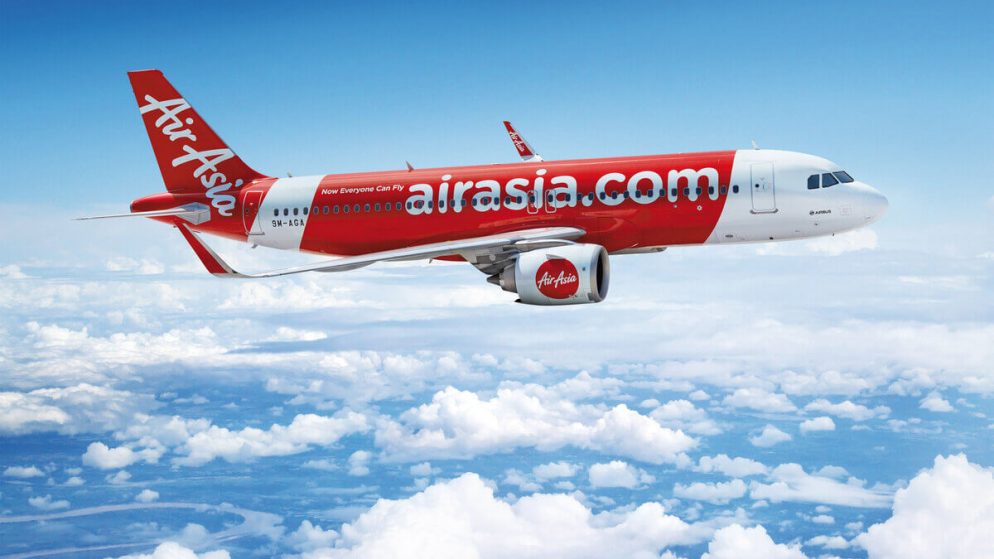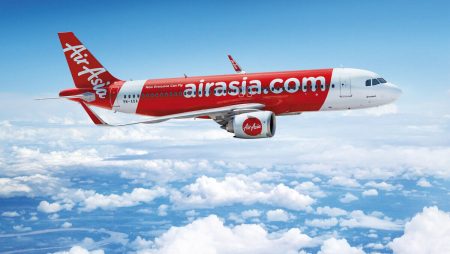

What Is AirAsia?
AirAsia is a well-known low-cost airline based in Malaysia. It was founded in 1993 by Tony Fernandes and started operations in 1996. AirAsia has since grown to become one of the largest and most successful low-cost carriers in the world. The airline operates both domestic and international flights to over 165 destinations in 25 countries.
AirAsia follows a no-frills business model, offering affordable air travel by minimizing operating costs and providing basic services. It focuses on point-to-point flights and operates predominantly in Southeast Asia, with hubs in Malaysia, Thailand, Indonesia, and the Philippines. However, the airline has expanded its reach to include destinations in East Asia, South Asia, the Middle East, and Australia.
In addition to its core airline operations, AirAsia has diversified its business and established several subsidiary companies. These include AirAsia X, which focuses on long-haul flights, and other ventures such as AirAsia Indonesia, AirAsia Philippines, and AirAsia Japan. The company has also expanded into related sectors, such as budget hotels (AirAsiaGo), online travel agency services (AirAsiaGo.com), and financial services (AirAsia Money).
AirAsia has gained recognition for its innovative and disruptive approach to the airline industry, revolutionizing travel in Southeast Asia by making air transportation more affordable and accessible to a larger segment of the population.
How Does AirAsia Work?
AirAsia operates on a low-cost carrier model, which allows it to provide affordable air travel to passengers. Here’s how AirAsia works:
- Low-Cost Operations: AirAsia focuses on cost efficiency in all aspects of its operations. It aims to keep its operating costs low by utilizing a single aircraft type (Airbus A320), negotiating favorable deals with suppliers, and implementing measures to maximize aircraft utilization.
- Point-to-Point Routes: AirAsia primarily operates point-to-point routes, which means flights travel directly from one destination to another without the need for connecting flights or hubs. This approach helps minimize operational complexities and reduce costs.
- Online Booking: AirAsia encourages passengers to book their flights online through its website or mobile app. This allows customers to compare fares, choose their preferred flights, and customize their travel options. Online booking helps streamline the ticketing process and reduces administrative costs associated with traditional ticketing systems.
- Ancillary Revenue: AirAsia generates additional revenue through ancillary services. Passengers have the option to add on various services during the booking process, such as checked baggage, seat selection, in-flight meals, travel insurance, and more. By offering these services as optional extras, AirAsia can keep its base fares low while allowing customers to tailor their travel experience.
- Simplified In-Flight Services: AirAsia offers simplified in-flight services to further reduce costs. Instead of providing complimentary meals and beverages, the airline offers a buy-on-board service where passengers can purchase food, drinks, and snacks during the flight. This approach helps keep ticket prices affordable and gives passengers the flexibility to choose what they want to consume.
- Operational Efficiency: AirAsia aims to optimize its operational efficiency by employing measures such as quick aircraft turnaround times, efficient ground handling, and streamlined processes. By minimizing ground time and maximizing flight utilization, AirAsia can achieve higher productivity and cost savings.
- Continuous Cost Optimization: AirAsia continually seeks ways to optimize costs and increase operational efficiency. It regularly reviews and adjusts its business model, explores new technologies, and looks for opportunities to streamline processes. This relentless focus on cost optimization helps AirAsia maintain its competitive edge in the low-cost carrier market.
AirAsia’s success lies in its ability to provide affordable air travel by minimizing costs, maximizing operational efficiency, and offering ancillary services to generate additional revenue.
Where Does AirAsia Fly?
AirAsia operates flights to numerous destinations across Asia and beyond. While the specific routes may vary over time, here are some of the key regions and countries AirAsia typically serves:
- Southeast Asia: AirAsia has a strong presence in Southeast Asia, with extensive domestic and international flights within the region. It serves destinations in countries such as Malaysia, Thailand, Indonesia, the Philippines, Vietnam, Cambodia, Laos, Myanmar, and Brunei.
- East Asia: AirAsia also operates flights to several destinations in East Asia. This includes countries like China (including Hong Kong and Macau), Japan, South Korea, Taiwan, and Mongolia.
- South Asia: AirAsia serves various destinations in South Asia, including India, Sri Lanka, Nepal, and Bangladesh.
- Middle East: AirAsia expanded its reach to the Middle East and offers flights to countries like Saudi Arabia, Oman, and Iran.
- Australia: AirAsia provides flights to Australia, particularly connecting major cities in Australia with Southeast Asian destinations.
- Pacific Region: AirAsia serves select destinations in the Pacific region, including flights to the Maldives and the Philippines.
- Beyond Asia: AirAsia X, the long-haul arm of AirAsia, operates flights to destinations outside of Asia, including flights to Australia, the Middle East, and select destinations in Europe.
AirAsia may change over time due to market demand, operational considerations, and other factors. Therefore, it’s always advisable to check AirAsia’s official website or consult their customer service for the most up-to-date information on their flight routes.
How to Book With AirAsia
Booking a flight with AirAsia is a straightforward process. You can book your AirAsia flight through the following methods:
- AirAsia Website: Visit the official AirAsia website at www.airasia.com. On the homepage, you will find the flight search box. Enter your departure city, destination, travel dates, and the number of passengers. Click on the “Search” button to view available flights. Select your desired flight option and follow the prompts to complete the booking process.
- AirAsia Mobile App: Download the AirAsia mobile app on your smartphone or tablet from the App Store (for iOS) or Google Play Store (for Android). Launch the app, and you’ll find a similar flight search function as on the website. Enter your travel details, select your preferred flight, and proceed to book.
- AirAsia Sales Offices: If you prefer booking in person, you can visit an AirAsia sales office or ticketing counter. AirAsia has sales offices in various locations, particularly in countries where they have a strong presence. Consult the AirAsia website or contact their customer service for the nearest sales office to you.
- Authorized Travel Agents: AirAsia has partnered with authorized travel agents who can assist you with flight bookings. You can visit these travel agents’ offices or contact them directly to inquire about AirAsia flights and make a booking.
During the booking process, you will need to provide passenger details, select any additional services or add-ons (such as baggage allowance, seat selection, meals, etc.), and make the payment for your flight. AirAsia accepts various payment methods, including credit/debit cards, online banking, and e-wallets, depending on your location.
Remember to review your booking details, including travel dates, passenger names, and any add-ons, before finalizing the booking. After completing the payment, you will receive a confirmation email with your itinerary and booking reference number.
AirAsia’s booking process may evolve over time, so it’s recommended to refer to the official AirAsia website or contact their customer service for the most up-to-date information and guidance on booking procedures.
AirAsia In-Flight Services
AirAsia offers a range of in-flight services to enhance the travel experience for passengers. Here are some of the typical in-flight services provided by AirAsia:
- Food and Beverages: AirAsia offers a buy-on-board service for food and beverages. Passengers can choose from a selection of hot meals, snacks, and drinks available for purchase during the flight. The menu options vary, and you can find both local and international choices.
- Duty-Free Shopping: AirAsia provides an onboard duty-free shopping service, allowing passengers to purchase a variety of products, including cosmetics, fragrances, accessories, electronics, and souvenirs. The duty-free catalog is available onboard, and passengers can make their purchases during the flight.
- In-Flight Entertainment: AirAsia provides an in-flight entertainment system known as “AirAsia WiFi Entertainment.” Passengers can access a range of movies, TV shows, music, games, and other content directly on their personal devices. This service is available on selected flights and can be accessed by connecting to the onboard WiFi network.
- Comfort Items: AirAsia offers comfort items for purchase onboard, such as pillows, blankets, travel kits, and other travel accessories, to make your journey more comfortable.
- AirAsia WiFi: AirAsia provides WiFi connectivity on select flights, allowing passengers to stay connected and access the internet during the flight. WiFi services are offered at a fee, and passengers can choose from different data packages based on their needs.
That the availability of in-flight services may vary depending on the route, aircraft type, and flight duration. Additionally, some services may be temporarily suspended or modified due to operational considerations or circumstances beyond AirAsia’s control.
For more specific information about the in-flight services available on your particular flight, it’s recommended to check AirAsia’s official website, review the in-flight announcements, or inquire with the cabin crew during your journey.
Legroom On AirAsia Flights
AirAsia offers different seat options with varying legroom on its flights. The legroom provided depends on the aircraft type and the seat class you choose. Here is a general overview of the legroom options available on AirAsia flights:
- Standard Seats: Standard seats on AirAsia flights typically provide a standard amount of legroom, which is similar to most economy class seats on other airlines. The specific legroom may vary depending on the aircraft type, but it is generally designed to provide a comfortable flying experience for most passengers.
- Hot Seats: AirAsia offers “Hot Seats” as a seat upgrade option. Hot Seats are located in the front rows or emergency exit rows of the aircraft, providing extra legroom compared to standard seats. This additional legroom can enhance passenger comfort during the flight. Hot Seats are available for an additional fee, and passengers can select them during the booking process, subject to availability.
That the amount of legroom can vary between different aircraft models within AirAsia’s fleet. For example, the legroom on an Airbus A320 may be slightly different from that on an Airbus A330 or other aircraft operated by AirAsia. Additionally, specific seat configurations and legroom measurements may also vary within the same aircraft type.
If you have specific legroom requirements or preferences, it’s recommended to review the seat maps and options available during the booking process on the AirAsia website or contact their customer service for more detailed information about the legroom on your particular flight.
AirAsia Luggage Allowance
AirAsia has specific luggage allowance policies that determine the number of bags you can bring and their weight limits. The luggage allowance may vary depending on the fare type, route, and whether you have purchased any additional baggage allowances. Here’s an overview of AirAsia’s typical luggage allowance:
- Cabin Baggage Allowance: AirAsia allows each passenger to carry one cabin bag and one small personal item onboard. The cabin bag must not exceed the dimensions of 56cm x 36cm x 23cm and should fit in the overhead compartment. The small personal item could be a handbag, laptop bag, or a small backpack that can fit under the seat in front of you.
Checked Baggage Allowance: The checked baggage allowance for AirAsia flights depends on the fare type and route. Generally, the standard allowance for domestic and international flights is as follows:
- AirAsia Domestic Flights: Passengers who have not purchased any additional baggage allowance are typically allowed up to 15 kilograms of checked baggage.
- AirAsia International Flights: Passengers who have not purchased any additional baggage allowance are typically allowed up to 20 kilograms of checked baggage.
It’s important to note that these weight limits are subject to change, and additional fees may apply for baggage exceeding the allowed limits.
- Additional Baggage Allowance: Passengers have the option to purchase additional baggage allowance if they need to bring more luggage. AirAsia offers various additional baggage options, allowing passengers to increase their checked baggage allowance according to their needs. The additional baggage allowance can be purchased during the booking process or through the Manage My Booking section on the AirAsia website.
Review the specific luggage allowance for your flight during the booking process or by accessing your booking details on the AirAsia website. Luggage allowance policies can vary, and it’s advisable to check the most up-to-date information regarding baggage allowances, fees, and any restrictions on AirAsia’s official website or by contacting their customer service directly.
Is Flying AirAsia Worth It?
Whether flying AirAsia is worth it depends on various factors and personal preferences. Here are some points to consider when assessing the value of flying AirAsia:
- Affordability: AirAsia is known for its low-cost model, which offers competitive fares compared to many full-service airlines. If you prioritize finding affordable airfares, AirAsia can be a good choice, especially for short-haul flights and when taking advantage of promotional deals.
- Route Network: AirAsia has an extensive route network across Asia and beyond, serving multiple destinations. If you are traveling within their network and they offer convenient connections for your desired routes, flying AirAsia can provide you with a wide range of options and flexibility.
- No-Frills Service: AirAsia’s low-cost model means that the services provided onboard are basic, and additional amenities such as meals, checked baggage, seat selection, and in-flight entertainment may come at an extra cost. If you are comfortable with a no-frills experience and are willing to pay for extras as needed, AirAsia’s fare structure may suit your preferences.
- Operational Efficiency: AirAsia has earned a reputation for its operational efficiency, quick turnaround times, and punctuality. If you value efficiency and on-time performance, flying with AirAsia can be advantageous.
- Ancillary Services: AirAsia offers various ancillary services, such as extra baggage allowance, seat upgrades, and access to premium lounges, which can enhance your travel experience. Consider whether these additional services align with your needs and preferences.
- Personal Comfort: The comfort level provided by AirAsia may vary depending on your seat selection, aircraft type, and flight duration. While AirAsia offers options such as Hot Seats with extra legroom for an additional fee, the standard seating may provide limited legroom compared to full-service airlines. Evaluate your comfort priorities and preferences when choosing an airline.
- Customer Feedback: Research and consider feedback from other travelers who have flown with AirAsia. Online reviews and forums can provide insights into the overall customer experience and help you gauge the quality of service.
The value of flying AirAsia will depend on your individual priorities, the specific flight routes, fares available, and the level of service and comfort you expect. Assessing these factors against your travel needs and budget will help you determine whether flying AirAsia is worth it for you.
Conclusion
AirAsia is a well-established low-cost airline that has gained recognition for its affordable fares, extensive route network, and operational efficiency. It offers competitive prices, particularly for short-haul flights within Asia, making it an attractive option for budget-conscious travelers.
However, it’s important to consider the no-frills nature of AirAsia’s services, with additional charges for amenities such as meals, baggage, and seat selection. Personal comfort preferences, the availability of ancillary services, and customer feedback should also be taken into account when evaluating whether flying AirAsia is worth it for you.
Weighing these factors against your own travel needs, priorities, and budget, you can make an informed decision about whether AirAsia meets your expectations and provides value for your specific journey.
FAQs
Does AirAsia provide meals on board?
AirAsia offers a buy-on-board service for meals and beverages. Passengers can purchase food and drinks during the flight from the available menu options.
Can I select my seat on AirAsia flights?
Yes, AirAsia offers the option to select seats during the booking process. However, seat selection may come at an additional cost, depending on the fare type and desired seat location.
What is AirAsia’s online check-in process?
AirAsia provides online check-in services through their website or mobile app. Passengers can check in online and obtain their boarding passes before arriving at the airport, saving time and avoiding queues at the check-in counters.
Does AirAsia offer any loyalty programs?
Yes, AirAsia operates a loyalty program called AirAsia BIG Loyalty. Passengers can earn BIG Points for flights and various partner transactions, which can be redeemed for flight discounts, seat upgrades, and other rewards.
Can I make changes or cancel my AirAsia booking?
AirAsia’s booking policies allow for changes and cancellations, but fees may apply. The specific terms and conditions depend on the fare type and the time of modification or cancellation. It’s advisable to review the booking terms or contact AirAsia’s customer service for detailed information.
Does AirAsia provide in-flight Wi-Fi?
AirAsia offers in-flight Wi-Fi on select flights. Passengers can purchase Wi-Fi access to stay connected and access the internet during the flight. Fees apply, and the availability of this service may vary depending on the aircraft and route.
How early should I arrive at the airport for an AirAsia flight?
AirAsia recommends passengers to arrive at the airport at least two hours before the scheduled departure time for domestic flights and three hours for international flights. This allows sufficient time for check-in, security procedures, and other pre-flight requirements.
Can I request special assistance or services for passengers with disabilities or medical conditions?
AirAsia provides special assistance and services for passengers with disabilities or medical conditions. It’s advisable to inform AirAsia in advance about your specific needs to ensure a smooth and comfortable travel experience.



